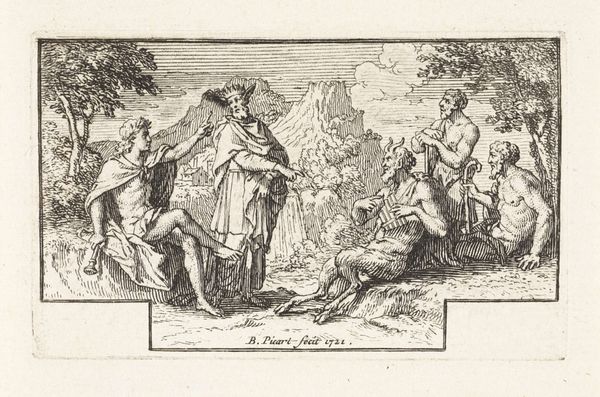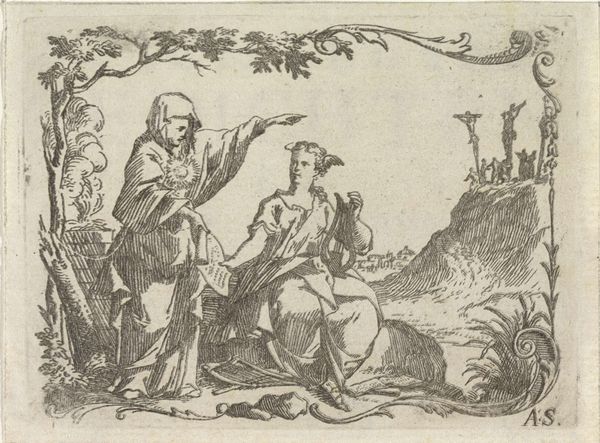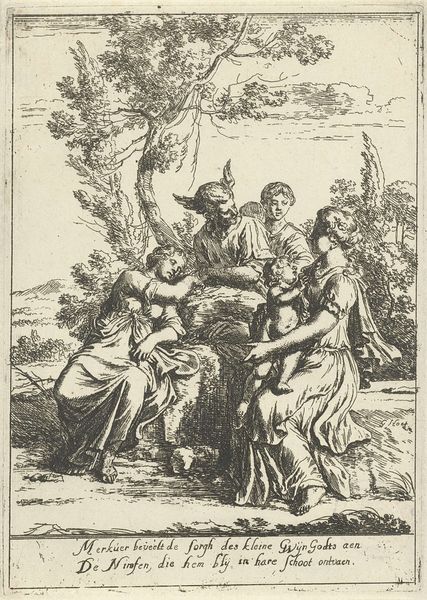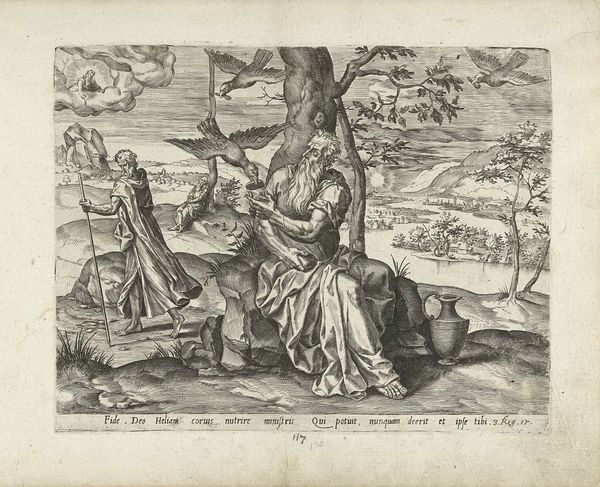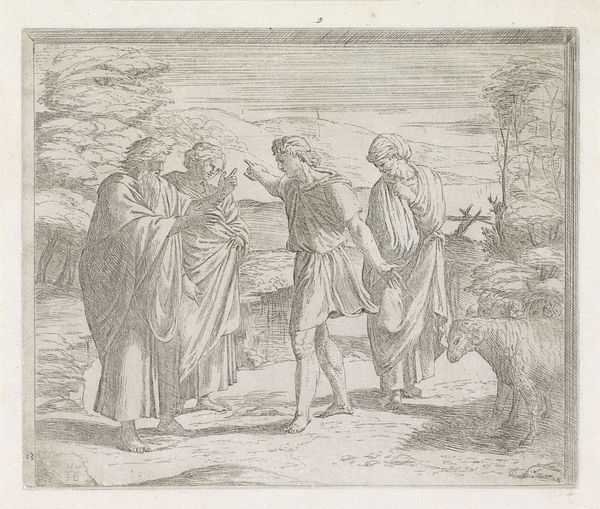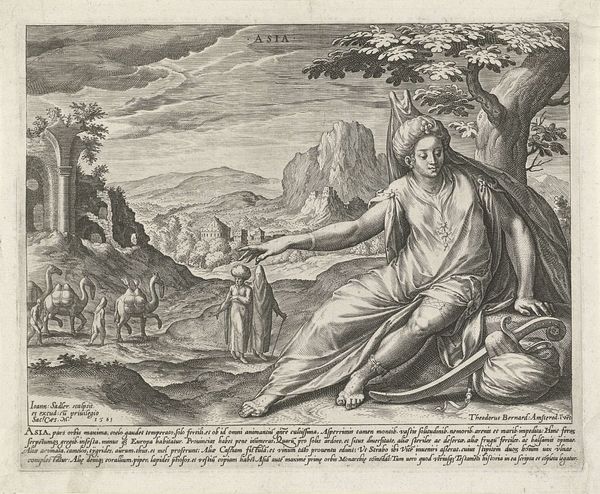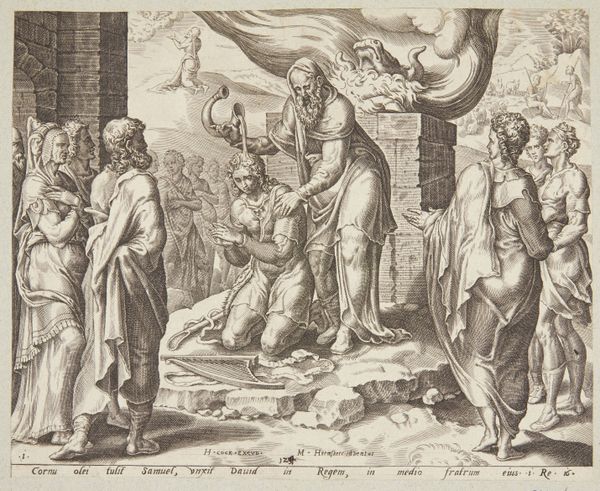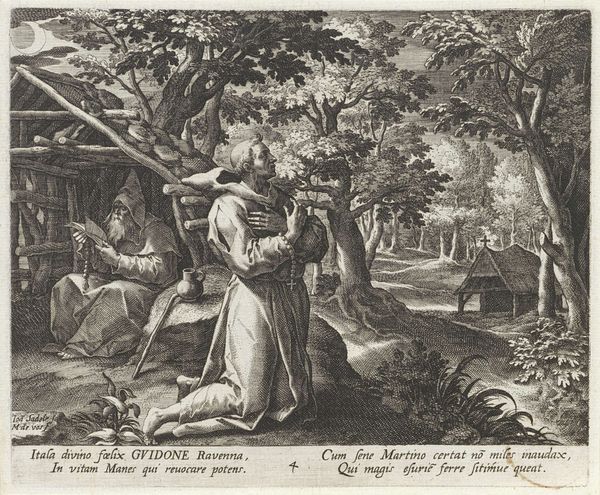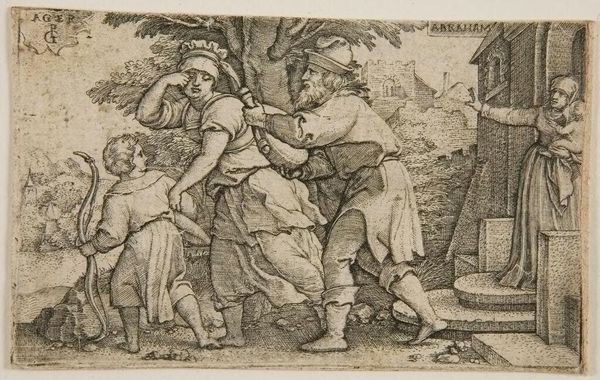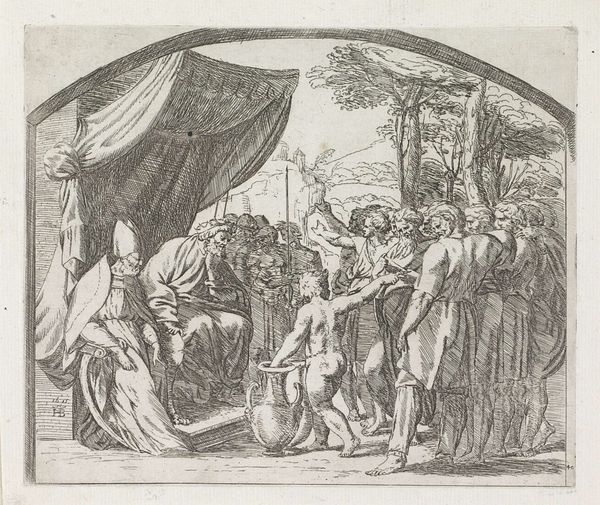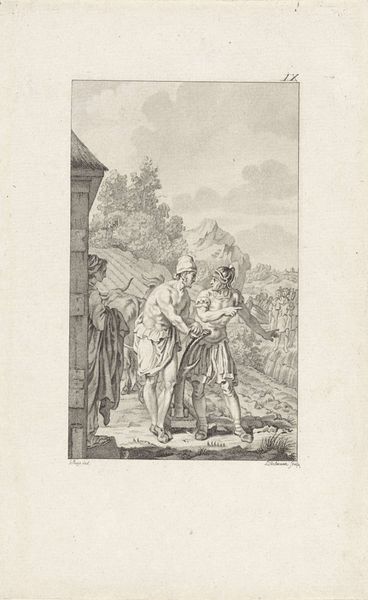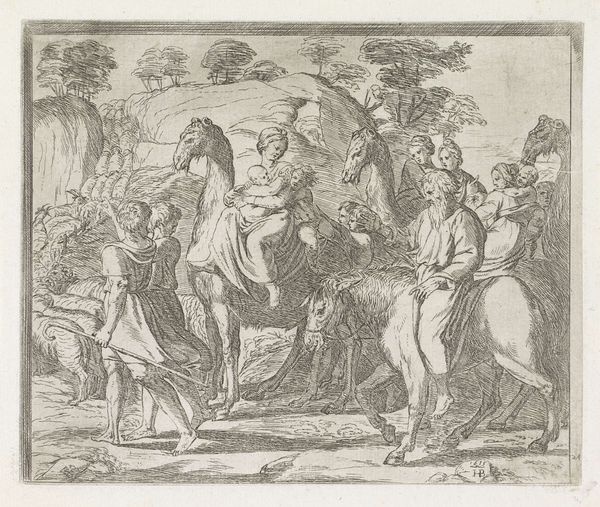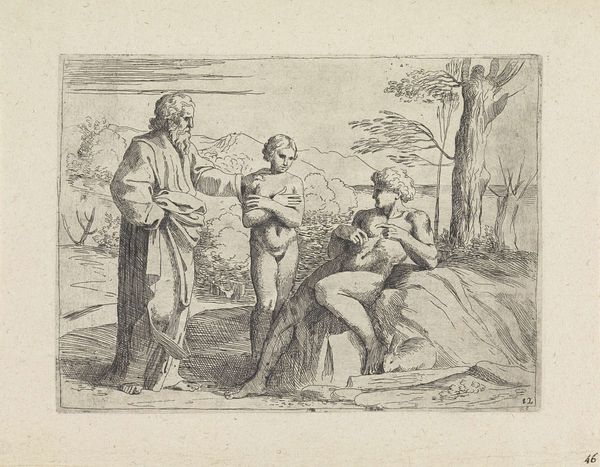
engraving
#
baroque
#
figuration
#
line
#
history-painting
#
engraving
#
christ
Dimensions: height 72 mm, width 207 mm
Copyright: Rijks Museum: Open Domain
Editor: Here we have Pier Leone Ghezzi's engraving, "Christus stelt Petrus aan als hoofd van zijn kerk," dating from sometime between 1684 and 1755. The linear detail is amazing, but it also feels…didactic? Almost like propaganda. How do you read it? Curator: You've touched on something key there. The engraving medium itself implies dissemination. It’s not a unique object but something intended for circulation, often with an explicit message. Think about who the likely audience would have been. Why circulate images like this? Editor: Presumably, to reinforce the authority of the church and specifically, Peter as its appointed leader? Curator: Precisely. Ghezzi, while working within established artistic conventions, participates in the construction of power through imagery. The very act of depicting this moment, "Christ Appointing Peter," isn't simply a neutral recording. How might social context of Baroque Rome influence the commissioning and reception of a print like this? Editor: So, this image, beyond its apparent subject matter, is a cultural artifact reflecting and perpetuating particular power structures of its time? The scale of distribution and the messaging become more critical to understanding the work than any artistic flourish? Curator: Exactly. And the stylistic choices contribute to this goal. Notice the clear lines and legible composition? This ensures the message is readily accessible and easily reproduced. The politics of imagery are rarely about the image alone. Editor: I always thought about art as being mostly aesthetic, but it is so cool to consider it from a historical perspective as well. Thank you. Curator: It’s a reminder that art, at every stage, is deeply entwined with the social, cultural, and political fabric of its time. Considering these engravings as active participants in the cultural sphere helps us appreciate the artist’s intentions in a new way.
Comments
No comments
Be the first to comment and join the conversation on the ultimate creative platform.
